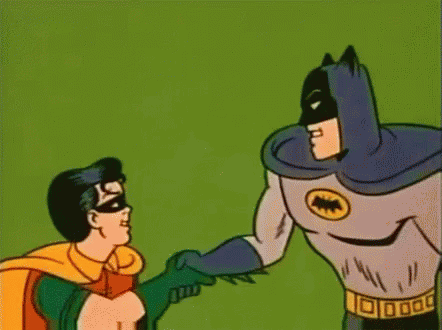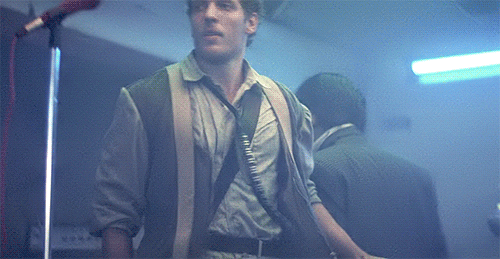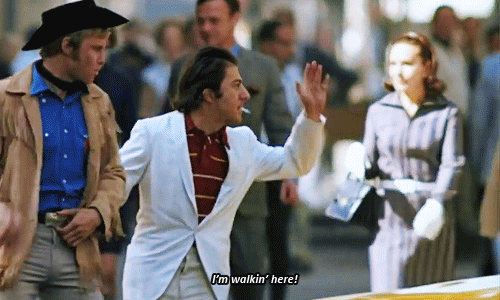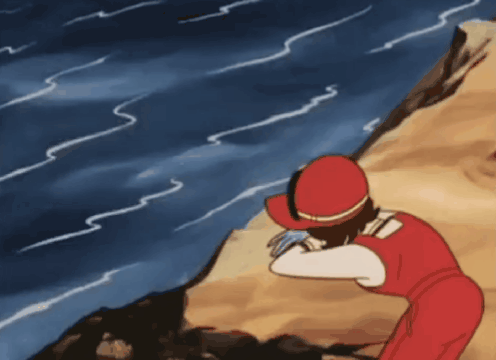KICK YOUR ENTHUSIASM (INTRO)
By:
January 2, 2022

Happy New Year!
For our 1Q2022 series, I’ve invited twenty-five HILOBROW friends and regulars to contribute an installment dedicated to a favorite sidekick — whether fictional or real-life. I’m thrilled about the KICK YOUR ENTHUSIASM series lineup:
Annie Nocenti on RATSO | Barbara Bogaev on TRIXIE | Sara Ryan on SWIFT WIND | Carlo Rotella on BELT BEARERS | Adam McGovern on JACKIE McGEE | Josh Glenn on RAWHIDE | Gabriela Pedranti on KUILL | Douglas Wolk on VOLSTAGG | Serdar Paktin on CATO | Deirdre Day on TRAMPAS | Dean Haspiel on TIN MAN | Flourish Klink on THE APOSTLE PETER | Miranda Mellis on FAMILIAR | Peggy Nelson on COSMO | Beth Lisick on MARTHA BROOKS | Bishakh Som on CAPTAIN HADDOCK | Stephanie Burt on SAMUEL TAYLOR COLERIDGE | Greg Rowland on SPOCK | Adam Netburn on SENKETSU | Mimi Lipson on ROBIN QUIVERS | Jonathan Pinchera on GUTS | Tom Nealon on TWIKI | Mandy Keifetz on DR. EINSTEIN | Judith Zissman on IGNATZ MOUSE | Anthony Miller on DOCTOR GONZO.
KICK YOUR ENTHUSIASM begins tomorrow! Below, please find a few back-of-the-envelope notes I’ve taken, based on the series installments that I have received so far, regarding the personal and narratological qualities that we’ve come to expect from sidekicks.

The sidekick is “trusty.” They do the protagonist’s bidding; if they don’t, they’re something else — i.e., not a sidekick. He or she is a second banana, and more or less happy to play that role. Which tells us a lot not only about sidekicks but about protagonists who have sidekicks: For better or worse, he or she is comfortable issuing orders.
The protagonist-sidekick collaboration is a tension-filled one, which is precisely why these duos are so… dynamic. Theirs is something less than an equal partnership, yet except for in a few rare cases the sidekick is not actually the protagonist’s servant or hireling. (And even when the sidekick is a servant, they will often express their own opinions and desires, refuse to obey or even cooperate, and so forth.) Theirs is an inherently agonistic relationship — the terms of which are constantly negotiated. We lack a sophisticated vocabulary for even talking about it….
On an existential level, the sidekick is not merely a second banana who wants to become a top banana, but an NPC who wants to become a player character. There is tragedy and comedy in this situation.
Concerning Samuel Taylor Coleridge, Stephanie Burt suggests that “Self-pity, the sense that he would never be the protagonist in his own life, animates his very best later poems, most of all ‘Dejection: An Ode,’ in which he resolves to study all the time, resigns himself to never being Wordsworth, and says he’ll never love again. He is — if you like rock and roll — the John Cale to Wordsworth’s hardworking Lou Reed, the multitalented figure who would never quite pan out as a front man.”
Writing about boxers’ belt-holders, Carlo Rotella sums up the dynamic tension like so: “Humans do enjoy walking in loose formation with likeminded humans, Reservoir Dogs-style, but the genuine feelings of cameraderie such behavior inspires can’t entirely cover up the fact that the belt bearer is also to some degree an oxpecker.”
In my own essay on Rawhide, from Buckaroo Banzai, I muse about the nature of the relationship between a leader and a lieutenant. “In David Bowie’s ‘Ziggy Stardust,’ we learn that Ziggy keeps his band motivated by ‘jiving us that we were voodoo.’ We see Buckaroo doing precisely this sort of thing with the other Cavaliers — telling Perfect Tommy that he’s perfect, seductively recruiting ‘New Jersey’ and Penny into the crew. But he never jives Rawhide.”

Sidekicks aren’t entirely submissive, usually — not even the robotic ones. A 100% biddable companion is a goon, a flunky, a lackey, a yes-man… which is not the same thing, exactly, as a sidekick. Many sidekicks are to a greater or lesser degree refractory, obstreperous, willful. On the other hand, someone who refuses to do the protagonist’s bidding isn’t really a sidekick, either. HILOBROW’s contributors are particularly drawn to those sidekicks whose independence challenges the very definition of sidekick.
On the subject of Jackie McGee, the investigative journalist in Al Ewing and Joe Bennett’s run on The Immortal Hulk, Adam McGovern says that she has “busted into the frame from the margins in her narrative presence, regardless of who was ready for her. She’s there to tell the Hulk’s tale and figure out her own, but she has stepped out from the shadows, and stands in no one else’s.”
In a meditation on another woman of color who sidekicks a monstrous figure, Mimi Lipson says of Robin Quivers that “Howard Stern has said many times that he’ll retire when Quivers does […]. I suspect that without her, he would never have developed his elevating, not to say redeeming emotional acuity. Long live Robin!”
Musing about Swift Wind, She-Ra’s steed in the animated series She-Ra and the Princesses of Power, Sara Ryan points to the horse’s predilection for speaking truth to power. “Swift Wind acts his most sidekick-like when Adora, despairing, fearful that her mere presence will put her friends in danger, says everyone would be better off if she stayed far away from them. ‘Well, that’s just stupid,’ Swift Wind says. Then he asks what turns out to be a key question for the series: ‘What good is all your power if you don’t use it to help the people that you love?'”
“Cato and Clouseau’s relationship is a symbiotic one, and also a puzzlement,” Serdar Paktin notes. “In addition to the love/hate question, one wonders: Which of the two is better at martial arts? Is one of them a genius, and the other stupid? We’ll never know for sure. The only thing that’s certain is that their dedication to playing the game — Cato attacking Clouseau when he least expects it — is absolute.”

Sidekicks are sketched rather than fully rendered. They’re two-dimensional, cartoon-like — which is not necessarily to say they’re cardboard, formulaic. Although some of them certainly are. What I mean is that whereas a protagonist (whether fictional or real-life) tends to be depicted as “hot” (complex, fully realized, evolving), a sidekick is typically “cool.” What you see, that is to say, is what you get.
The sketchiness of sidekicks is often signaled by a minimalist moniker. One thinks of Tonto, Dino, Kato, Cosmo, Cato, Ratso, say… or of Bucky, Goofy, Chewie, Twiki, Stimpy, Donkey, Yoshi. As noted above, there is a cartoonish quality to such monikers.
Writing about a Star Wars franchise character who first appeared in The Mandalorian TV series, Gabriela Pedranti explains that her fondness for Kuill has everything to do with his restraint and reticence. “Although Kuiil isn’t a main character, he reminds us of what we’ve learned from this space opera: We should be observant and down-to-earth, we should learn from the mistakes of the past, and we should say only what’s necessary.”
And in an installment dedicated to Martha Brooks, from the show Baskets, Beth Lisick likewise sings the praise of the character’s understatement: “Martha knows Chip needs her, even if he can’t quite acknowledge it, or sometimes, acknowledge her. A superhero in a tan Cutlass Ciera, Martha has the power to be invisible and absorb endless blows.”
As McLuhan teaches us, the “cool” is fascinating because it is low-definition; we project our own notions onto the sidekick, thus participating in a way in the sidekick’s authorship. Is this why we find sidekicks so engaging?

Both physically and ethically, whereas a protagonist is often straight and strong, a sturdy oak of sorts, a sidekick is often more of a willow — flexible, adaptable. The scrappy sidekick bobs and weaves, jukes and jives.
Brooding over Ratso, from Midnight Cowboy, Annie Nocenti finds a grim parable for today’s youth: “Ratso never had the options of the Warhol kids, and this resonance has a further reach in today’s economic schisms. Ad culture sells millennials the same hope that was achievable to the boomers before them, but impossible for many today, leaving them trapped in the undercurrents, hustling via Instagram and kickstarters. A grifter’s hustle is the norm, as more people than ever maneuver to feed from the scraps.”
Some sidekicks just show up and attach themselves to the protagonist. Like Ratso, they are parasites — but they soon prove themselves to be more than that too.
In an eldritch tale about a “familiar,” Miranda Mellis recalls: “When I opened my front door, before I could turn around, he had run past me into the apartment. He went straight to my bed, leapt into it and curled up. I got a bowl of water for him and opened the window next to the bed. That night, as he sat watching, I fell asleep immediately and slept all night without waking, for the first time in months. I slept consciously, lucid dreaming.”
Sidekicks are malleable, protean figures; they’re forever keeping an eye out for the main chance. This sort of thing can be played for laughs… but because scrappiness suggests an eked-out existence, the necessity of hustling, it’s essentially tragic too.

Oftentimes sidekicks evoke in us a certain sentimentality — a tender emotional response. We want to take them under our collective wing; which is precisely the effect they’ve had on the protagonist as well.
Recalling his early affection for the Tin Man in the 1939 movie adaptation of The Wizard of Oz, Dean Haspiel goes on to explain: “My empathy for other misunderstood misfits with heartfelt intentions like Mary Shelley’s Frankenstein monster and Boo Radley from Harper Lee’s To Kill a Mockingbird manifested in my own complicated work when I became a cartoonist and, later on, a playwright. ”
Sidekicks don’t always get the love they deserve, though. In a lament for Trixie, from the cartoon Speed Racer, Barbara Bogaev observes: “A groundbreaking female character in Japanese cartoons, she’s a skilled mechanic and daring helicopter pilot, who flies ahead and spots landslides, fallen bridges, and oil slicks during races. And she does it all while looking cute in capris and a pink bow. But no matter how competent Trixie is, or more likely because of her hyper-competency, no one ever falls in love with her.”
Sentimentality can be messy and excessive, which is OK (for example, Frank Capra movies). But it can also be shallow and uncomplicated; James Baldwin called sentimentality “the mark of dishonesty, the inability to feel.” So when a sidekick worms his or her way into your heart, it’s worth asking yourself why.

No matter how dignified and mature a sidekick may be, there’s often something inherently child-like about their relationship with the protagonist.
Many classic sidekicks are juvenile — or juvenile-acting — foils for grownup, all-too-grownup protagonists. One thinks of Robin vis-à-vis Batman, Kim vis-à-vis the Red Lama, Donald Duck vis-à-vis Mickey, Bucky Barnes vis-à-vis Captain America, Jimmy Olsen vis-à-vis Superman, Morty vis-à-vis Rick, and so forth. These sidekicks tend to be personifications of the id; watching the protagonist redirect the youthful sidekick’s impulses is an “adulting” lesson. But we also relate to the youthful sidekick; they’re fun to watch.
Recalling her childhood affection for Trampas, from The Virginian, Deirdre Day notes: “When trouble happens to Trampas, it’s … likely that he has brought it on himself. He’s a jump-first kind of guy. While the Virginian is wise and careful, Trampas mugs and doubletakes and right near stamps his feet if he can’t go to the big dance in town.”
Bishakh Som sings the praises of Captain Haddock, who although technically an adult (while Tintin seems more of an ephebe) is a child-like figure. “Haddock plays the id to Tintin’s superego, not only in his Dionysian love for the drink, but in his lush and fruity use of language. In the heat of confrontation with an adversary, his eyes white with anger, the captain’s famous barrage of epithets are let loose: ‘Swine! … Jellyfish! … Tramps! … Troglodytes!’ Words, in such moments, become as potent a brew as liquor.”
I’ll give the final word, here, to Douglas Wolk. After a a lightning-fast overview of the evolution of Thor’s Falstaffian comrade Volstagg, Wolk — author of the much-acclaimed new book All of the Marvels: A Journey to the Ends of the Biggest Story Ever Told — notes that “a sidekick who knows that he’s the real hero’s comedic foil has room to find a way of his own to bend events to the best outcome.”
This is the twentieth “enthusiasm” series that we’ve run, here at HILOBROW, since starting things off way back in 2011 with KIRB YOUR ENTHUSIASM. I’m grateful to the KICK YOUR ENTHUSIASM series contributors — many of whom have donated their fees to Covenant House, which provides housing and supportive services to youth facing homelessness.
I’m also grateful to Greg Rowland — who contributed an item to KIRB YOUR ENTHUSIASM over a decade ago, and who suggested the theme and title for our 1Q2021 series.
PS: Also see TV TROPES on the topic of sidekicks.
MÖSH YOUR ENTHUSIASM (1Q2024): ENTER SANDMAN | BORN TOO LATE | MILQUETOAST | GAS BURNER PANIC | CHRISTBAIT RISING | & 20 other Eighties (1984–1993) Metal songs. STOOGE YOUR ENTHUSIASM (4Q2023): MOVE ON FAST | 96 TEARS | SHE CRACKED | WHAT A WAY TO DIE | PSYCHOTIC REACTION | & 20 other Sixties (1964–1973) proto-punk songs. JACK KIRBY PANELS | CAPTAIN KIRK SCENES | OLD-SCHOOL HIP HOP | TYPEFACES | NEW WAVE | SQUADS | PUNK | NEO-NOIR MOVIES | COMICS | SCI-FI MOVIES | SIDEKICKS | CARTOONS | TV DEATHS | COUNTRY | PROTO-PUNK | METAL | & more enthusiasms!
